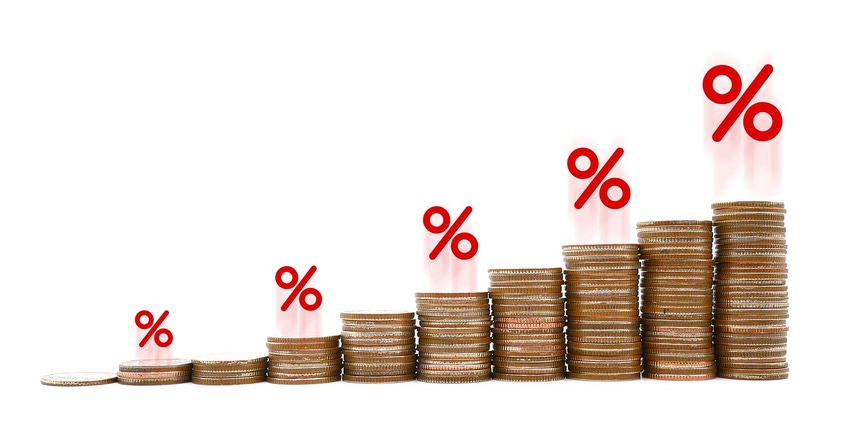
U.S. debt has now reached 128% of gross domestic product (GDP). This is the worst debt to GDP ratio ever recorded, dropping the U.S. world rank to 162 out of 173 countries we monitor.
This should be alarming as it creates a conundrum for central bank fiscal management. The only way to strengthen the economy with a debt load this high is to allow inflation to drive asset values higher, causing huge acceleration in business activity as consumers borrow against home values and make purchases of goods and services. This activity then generates adequate tax revenues to service the debt and brings income to debt ratio is back in line.
But strengthening the economy via inflation can be difficult. The fiscal policy of the central bank has been targeting +2% inflation rate since coronavirus impacted economies. Although it took longer to achieve than expected, inflation did respond to the policies that injected liquidity and loosened the reins on money supply.
Fed policy has been successful in driving home prices higher. There has been an increase in consumer confidence, consumer borrowing, and consumer purchases of homes, cars, renovations and other services. This has lifted the burden of heavy debt overhead.
But is the central bank policy of liquidity creating too much inflation? Recent statistics suggest food and fuel expenses are exceeding rising incomes, and as a result, could be starting to pinch disposable income.
Inflation becomes political
This has also become politicized, which creates a public perception and possible spending reaction to that perception that is dangerous. A major result of politicizing run-a-way inflation was the recent decision by a few countries to simultaneously open emergency energy reserves. Although the reality of the reserve opening means nothing to annual supply-demand balance, it was a political optic that served to take urgency away from fuel buyers and prices fell.
If consumers were to become fearful due to excessive political statements about inflation and stop spending to preserve cash, prices could deflate and that would cripple Fed fiscal policy for an inflation-based recovery.
Graphs of U.S. inflation rate and U.S. GDP growth rate over time
The lessons of the Great Depression, the late 60s and 70s (which lead to the worst Ag recession in the 1980’s since the depression), and the black swan event in 2008 have created a smarter fed banking system. Thus, the risks seem low that central banks would overstay a policy beyond its benefits.
One of the measures that is monitored is inflation versus growth. As long as growth exceeds inflation, discretionary income is not adversely impacted and economic activity as a result of inflation is “healthy.” As depicted by these charts, growth has now retreated below recent inflation statistics which could drive disposable income down and, in time, run the risk of a retreat in spending and ultimately pressure prices.
High stakes
The big difference now versus previous history is that the entire world went into debt following the corona virus - more than any historical time period. Changing the direction of this vessel may be more difficult and could require a concerted effort of world banks to swing fiscal policy (similar to the recent energy reserve decision).
The risk of central banks not acting fast enough to manage inflation would put the burden of finding equilibrium on the free market. History tells us that allowing the free market to rebalance inflation to income would be a more challenging process.
If inflation squeezes disposable income and consumers stop spending, then prices deflate. Central banks then have to inject liquidity – feeding the inflation formula and creating an even more difficult issue for disposable income, hence increasing an even a larger population of consumers to preserve cash and pressure prices. Japan, Argentina, Venezuela are just a few that have had difficulty maneuvering this environment. I would bet on central banks managing inflation risk.
Until we see the Fed and world central banks tighten, inflation will persist and be a significant influence on our market. When you see the Fed and central banks tightening, it should slow economic activity and stabilize consumer discretionary income. Any deflationary spiral is more likely to be short lived and likely regionalized.
For more information on AgMarket.Net research, comments, staff and services, please feel free to call or visit www.AgMarket.Net.
Reach Bill Biedermann at 815-893-7443 or [email protected].
The risk of loss in trading futures and/or options is substantial and each investor and/or trader must consider whether this is a suitable investment. AgMarket.Net is the Farm Division of John Stewart and Associates (JSA) based out of St Joe, MO and all futures and options trades are cleared through ADMIS in Chicago IL. This material has been prepared by an agent of JSA or a third party and is, or is in the nature of, a solicitation. By accepting this communication, you agree that you are an experienced user of the futures markets, capable of making independent trading decisions, and agree that you are not, and will not, rely solely on this communication in making trading decisions. Past performance, whether actual or indicated by simulated historical tests of strategies, is not indicative of future results. Trading information and advice is based on information taken from 3rd party sources that are believed to be reliable. We do not guarantee that such information is accurate or complete and it should not be relied upon as such. Trading advice reflects our good faith judgment at a specific time and is subject to change without notice. There is no guarantee that the advice we give will result in profitable trades. The services provided by JSA may not be available in all jurisdictions. It is possible that the country in which you are a resident prohibits us from opening and maintaining an account for you.
The opinions of the author are not necessarily those of Farm Futures or Farm Progress.
Read more about:
InflationAbout the Author(s)
You May Also Like






